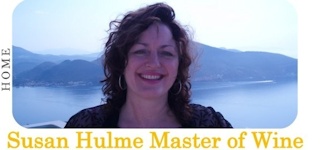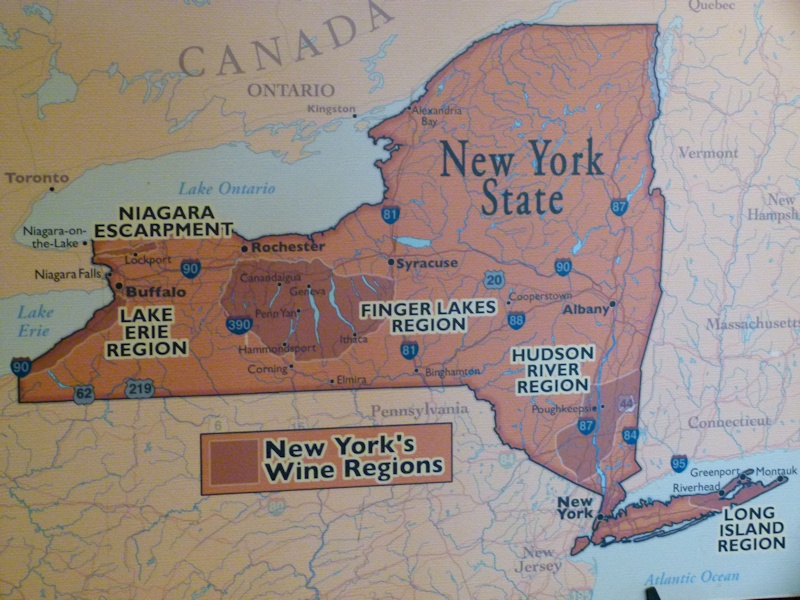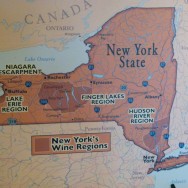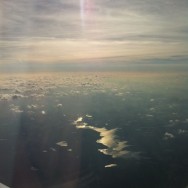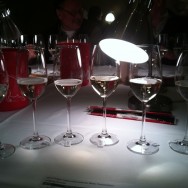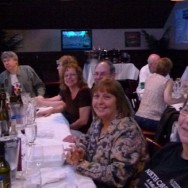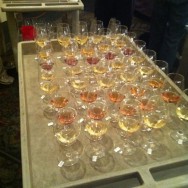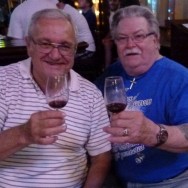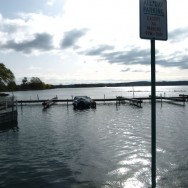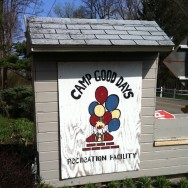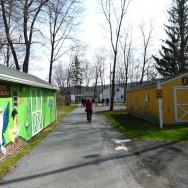The hand of God touched the land and that’s how the beautiful glacial Finger Lakes in upstate New York were formed. That’s how it was told to me, and if you look at the pattern of the five main Finger Lakes they do look like a splayed hand. Naturally I was thrilled to be invited to be an international judge at the Finger Lakes International Wine Competition (FLIWC) held in Rochester, upstate New York in March 24-27 2012, for a number of reasons. First, I had been on a Circle of Wine Writers trip 20 months earlier to visit several of the Finger Lakes wineries, organised by the wonderful Susan Spence and Julie Arkell and I had been very impressed with some of the wines. It was not just the predictably high quality of some of the Rieslings that beckoned me back, but a handful of exciting Pinot Noirs and Chardonnays from the Finger Lakes and some exciting wines from Long Island as well.
Another reason I was keen to participate is that the money from this competition goes to support a very worthy cause: www.campgooddays.org provides a summer camp by one of the beautiful Finger Lakes for children who suffer from cancer and is designed to give them a chance to have fun and be children again, at least for the duration of the camp. The international judges were offered the chance to stay on after the competition and visit some of the winning wineries in the Finger Lakes and we were able to visit Camp Good Days camp and see the facilities for ourselves.
Apart from these very good reasons to go, I have always wanted to visit New York City; as I had to fly into and out of New York I decided I would stay on after the competition for a few days and get to grips with the city that never sleeps.
As a big bonus I met a great bunch of fellow judges and the organisers were so very welcoming and warm and made me feel at home. I caught up with the lovely Vinandino team, Claudia and Ramon, who were fellow judges. I met the charming, Miguel Berzosa Iborra, organiser of the Bacchus wine competition in Madrid, as well as a distinguished roll call of some of the key figures in the American and Canadian wine trade.
I learned a few new things. From the urbane and very knowledgeable Peter Gamble, Canadian judge and owner of Villa Viamonte in Argentina, I learned what effect lady bugs (lady birds, or more specifically Multi-Coloured Asian Lady Beetle (MALB)) can have on the smell and taste of a wine. He found an example in the competition and brought it over. The smell is often described as crushed peanut shells, rancid peanut butter or a specific version of bitter ‘greeness’ which is very pungent. To me It smelt like crushed, bitter, privet leaves had been put in the glass. Peter said It was an issue on some 2007 Burgundies, as well as wines from other parts of the world, notably Canada.
For the first time ever, I tasted and judged some fruit wines, mead and some wines made from native American vines, such as the Vitis Labrusca vine, Niagara (a little Niagara goes a long way, but there are those who love it).
Dr Richard Peterson our panel chair, told me about how he discovered a vine in the 80’s in Wrotham in Kent. He thought it might be Pinot Noir and learned it had existed in Britain since Roman times and had developed a sort of immunity to rot in order to survive our damp, misty climate. On returning to the States, and having planted and grown it, he sent samples to Davies for DNA analysis and lo and behold it was Pinot Noir. He now makes a very limited quantity of what sounds like a fascinating sparkling wine from this variety sold under the name of ‘Richard Grant’. See www.RichardGrantwine.com for more details.
It was fun tasting wines from all over the USA as well as Canada and beyond although I’m still disappointed I didn’t get to try the pineapple wine from Hawaii!
The Competition takes place over a weekend, with just two days of judging and I was very impressed by how well it was organised. The good points from a judging point of view were that we sit down to taste and the wines are brought to us ready poured in flights. Sitting down, as well as being less tiring, encourages people not to rush the wines, which in my view is always a good thing, and it allows a pause to cleanse the palate properly between flights while the helpers clear away and bring in the next flight.
Like most major wine competitions the wines are served in flights of between 8-14, (usually 8 here) and are either all the same variety or closely related in style. However, another big plus is that there are two breaks, one in the morning and one in the afternoon, as well as a lunch break. There is plenty of food provided in the breaks – as well as the usual tea, coffee and biscuits the food served includes roast beef and cheese. This again helps to cleanse the palate. Although I didn’t want to be eating all day these breaks and snacks helped a lot to recalibrate the palate especially following big flights of tannic red wines or flights of sweet wines. Servers also brought slices of
rare beef to the tasting tables to cleanse the palate when tasting a lot of powerful red wines. It was all very well thought-out and made the tasting process easier and more accurate.
I was on a distinguished panel which included fellow Master of Wine Patrick Farrell from California, tha affable Rob Bruley M.D. and Dr Richard Peterson who was described to me as ‘an iconic figure’ in the US wine trade. A brief biography will explain why – after a degree in chemistry he worked for E & J Gallo as assistant production manager, then he was winemaker at Beaulieu vineyards, then Atlas Peak. Apart from many other accolades, he has two daughters who are trained winemakers. One of them, Heidi Peterson Barrett was the winemaker of Screaming Eagle. In any case he was a very modest, charming man and a very good, inclusive panel chair whose manner reminded me a little of the much admired famous American actor, James Stewart.
Our panel had the honour of choosing the best overall Cabernet Sauvignon out of the gold medal winners and although this was a big flight by FLIWC standards (about 13/14 wines) 4 out of 5 of us picked the overall winner before any discussion or consultation with each other. The other judge also had it as one of their top wines. This wine turned out to be Ch. St. Michelle, Canoe Ridge, Cabernet Sauvignon 2009 (95% Cabernet Sauvignon. 5% Merlot from Washington State). This wine had lovely aromatics, a beautiful silky texture and refined tannins. We also really liked a NZ Pinot Noir which won a double gold and turned out to be Pisa Range Estate 09 from Central Otago.
Facts and Figures
One of the key organisers, Peter Parts, gave us a brief overview of the competition facts and figures. There were 64 judges from 15 different countries, 3200 wines from 22 countries and all 50 US states had entered wines including Mississippi, Hawaii and Alaska (although in some cases like Alaska the grapes were grown elsewhere). There were also wines from all 6 Canadian provinces as well. Full results are published at www.fliwc.com
Many thanks to competition organisers, David, Ron and Peter for inviting me, to Chris and the wonderful team of helpers and volunteers and to my fellow judges for making it such an enjoyable and worthwhile event.
- New York’s Wine Regions
- Finger Lakes through the clouds
- White wines under the spotlight
- My fellow judges
- The next flight
- Rosé wines under the spotlight
- Ramon (from Vinandino) and David Male (FLIWC organiser)
- Canandaigua Lake
- Camp Good Days
© 2012, Susan Hulme MW. All rights reserved.
